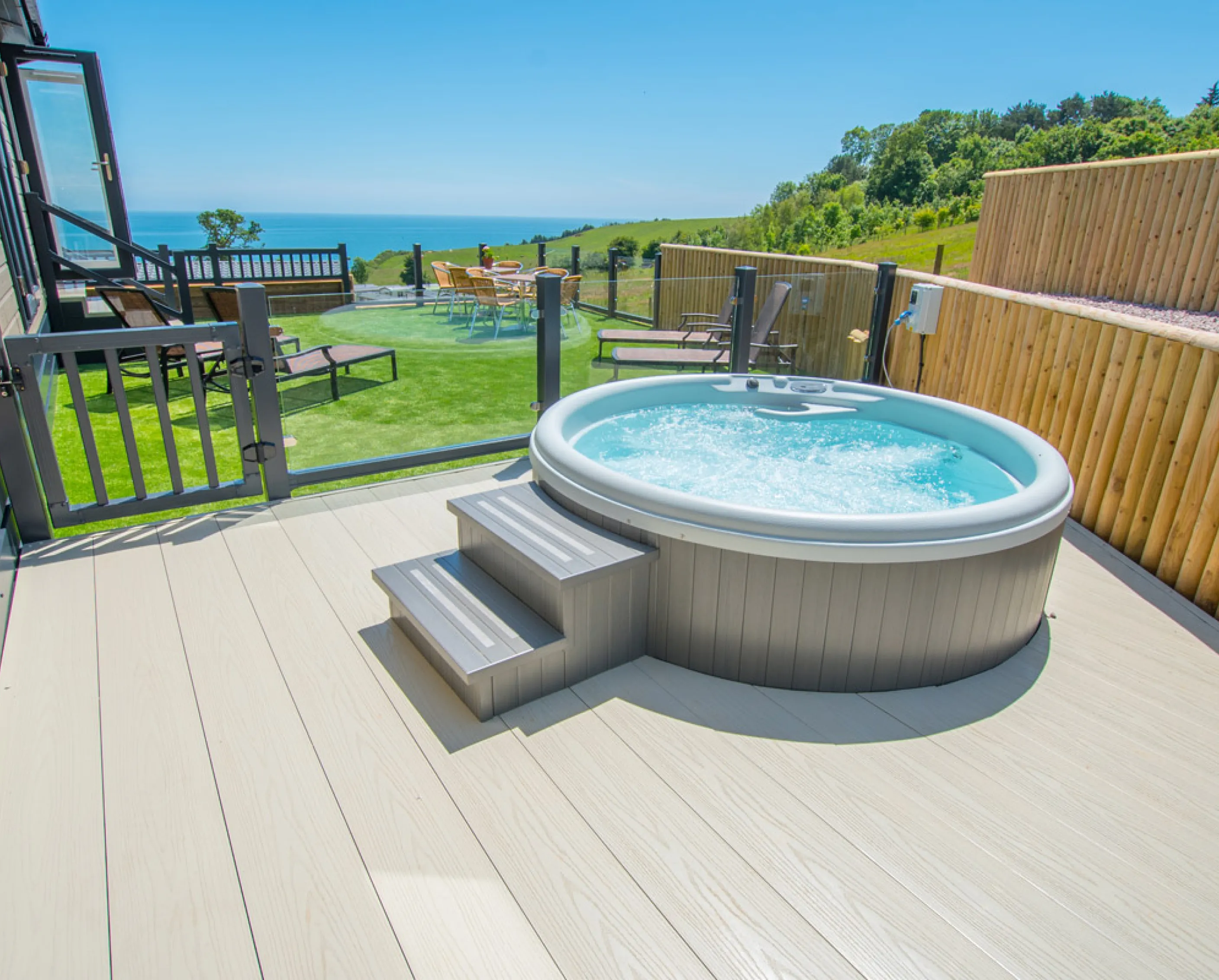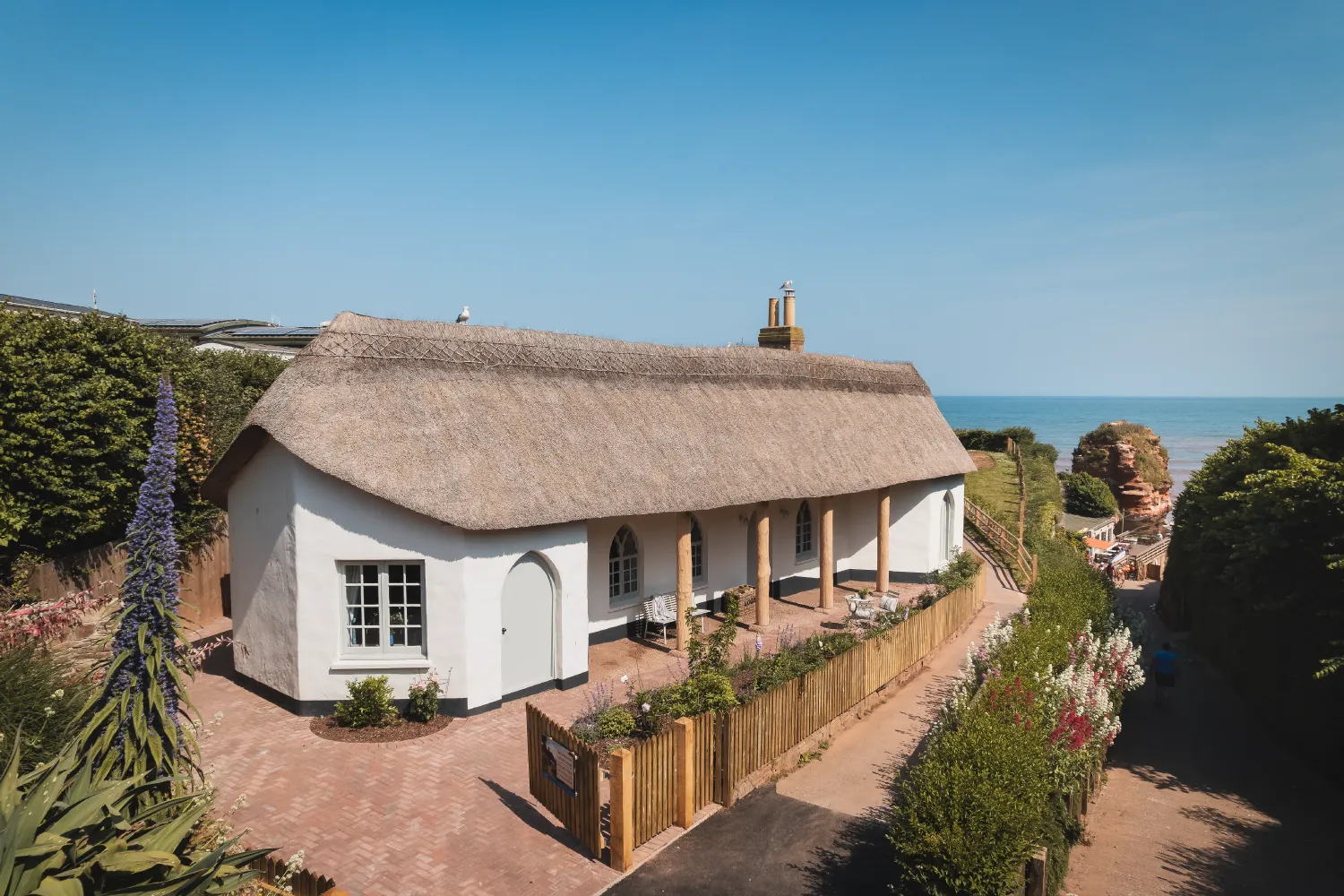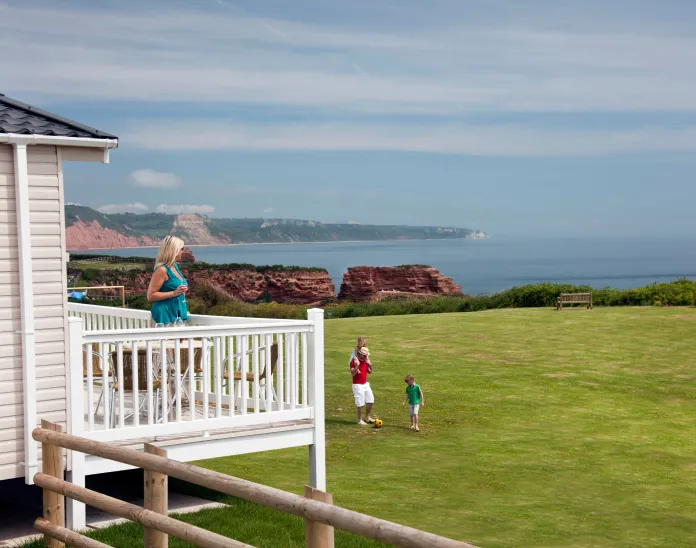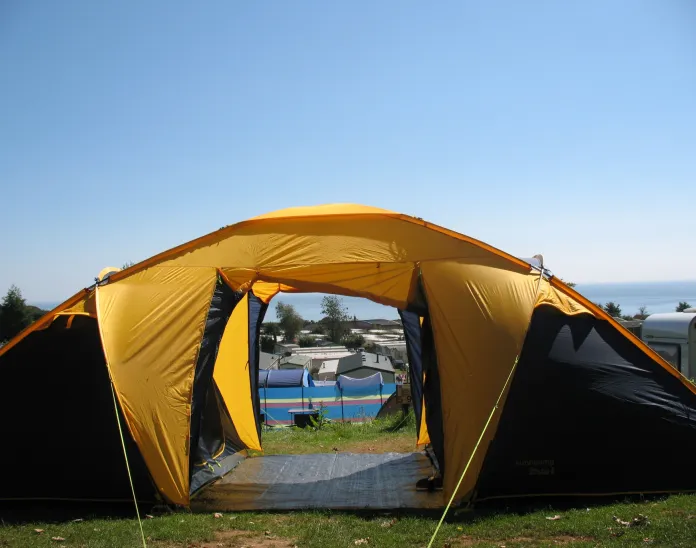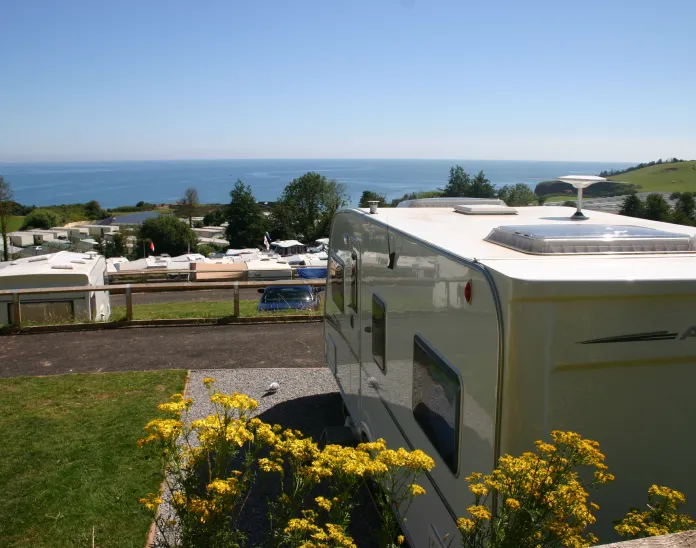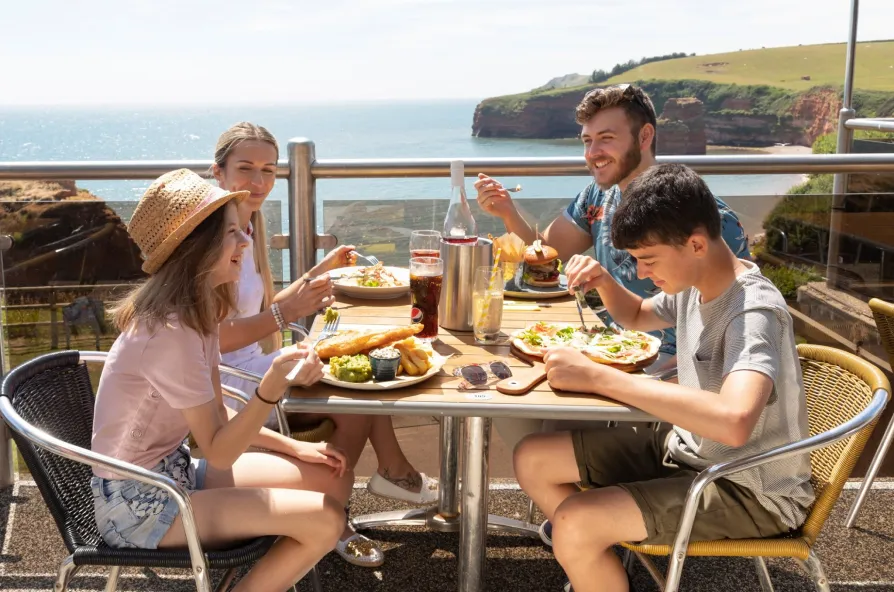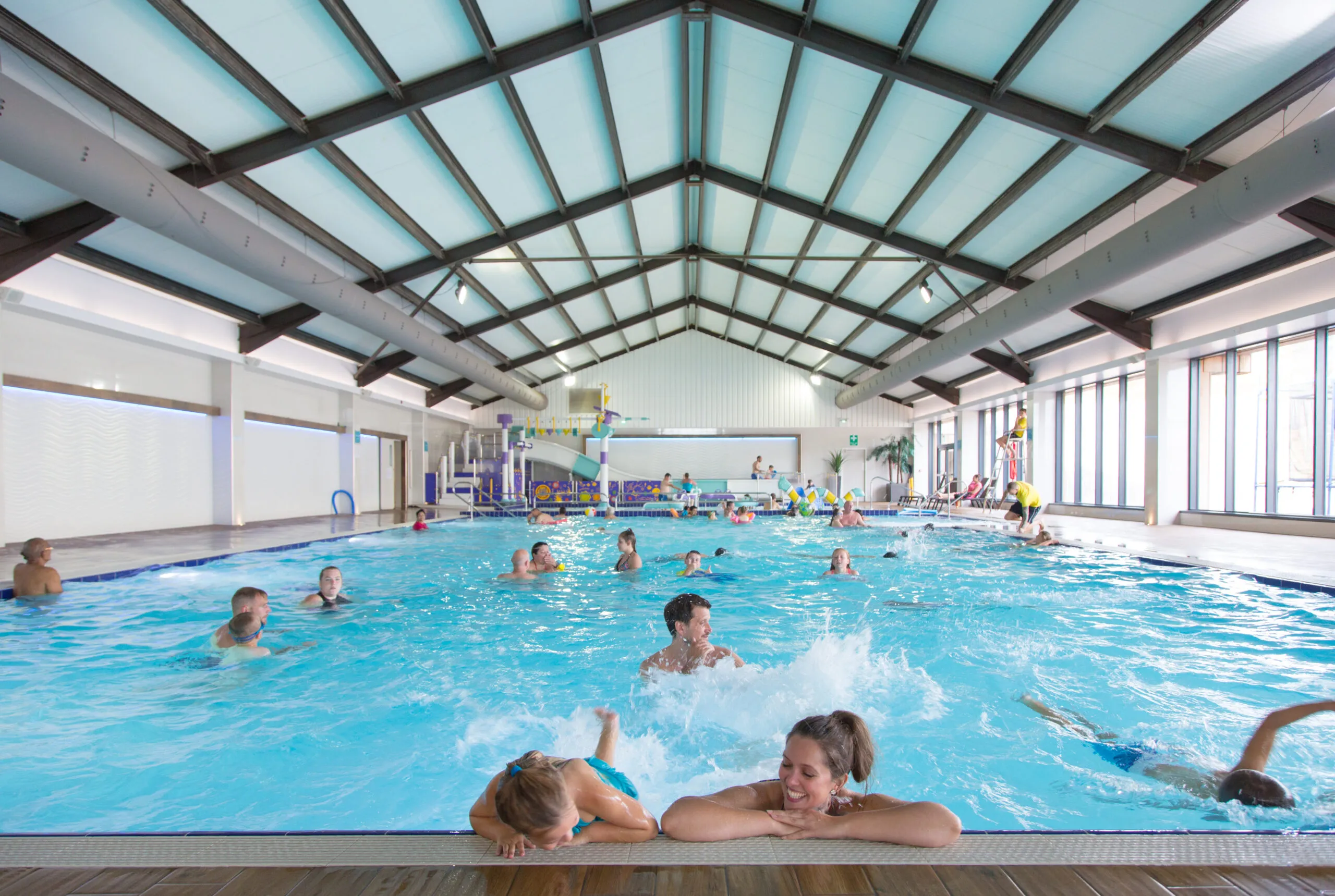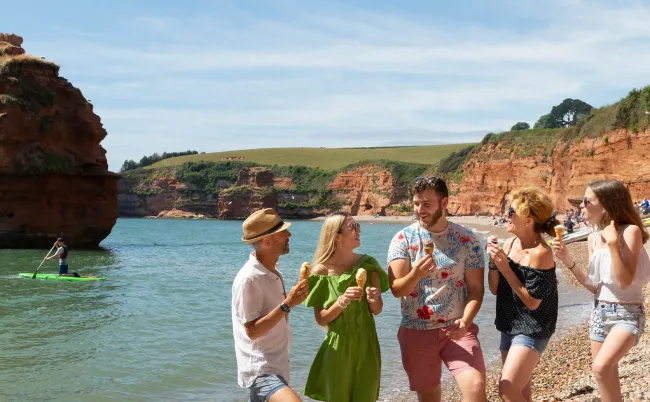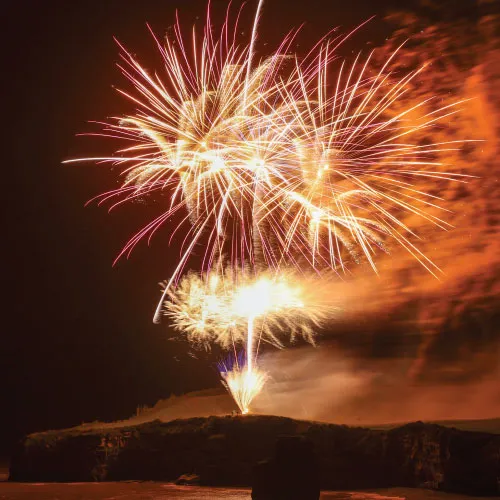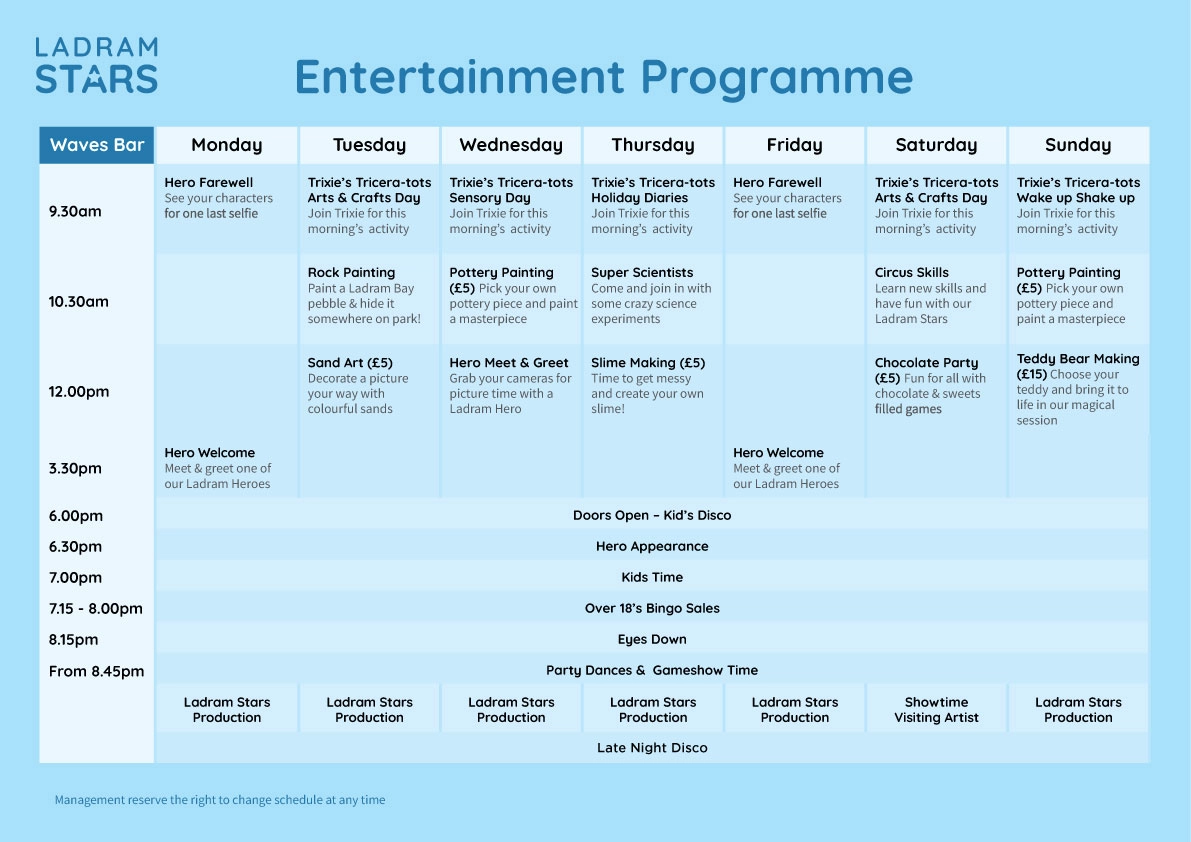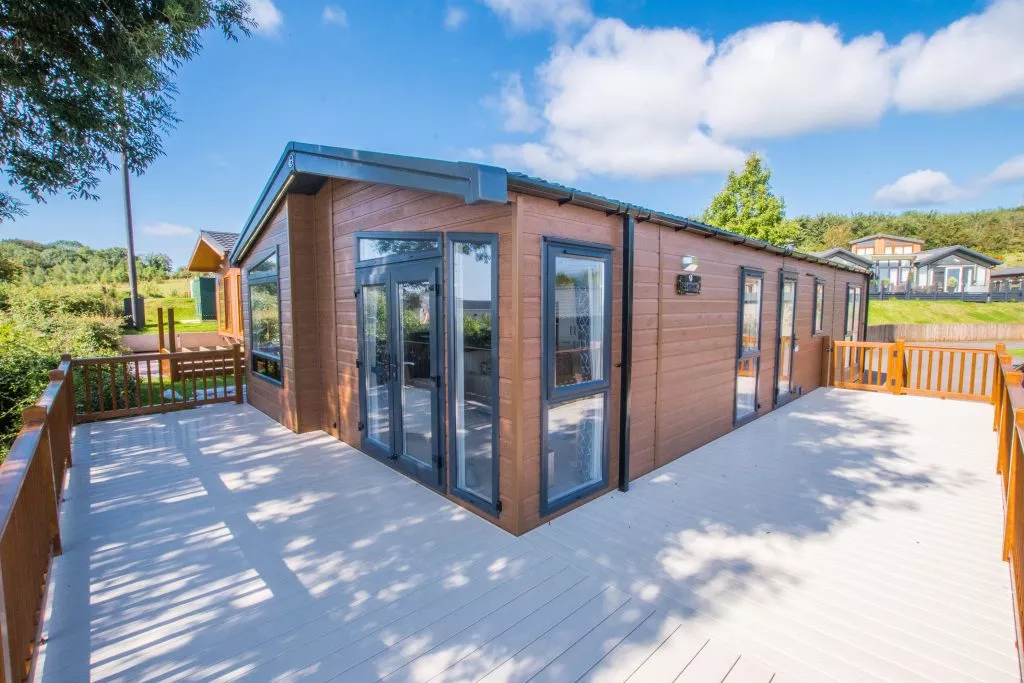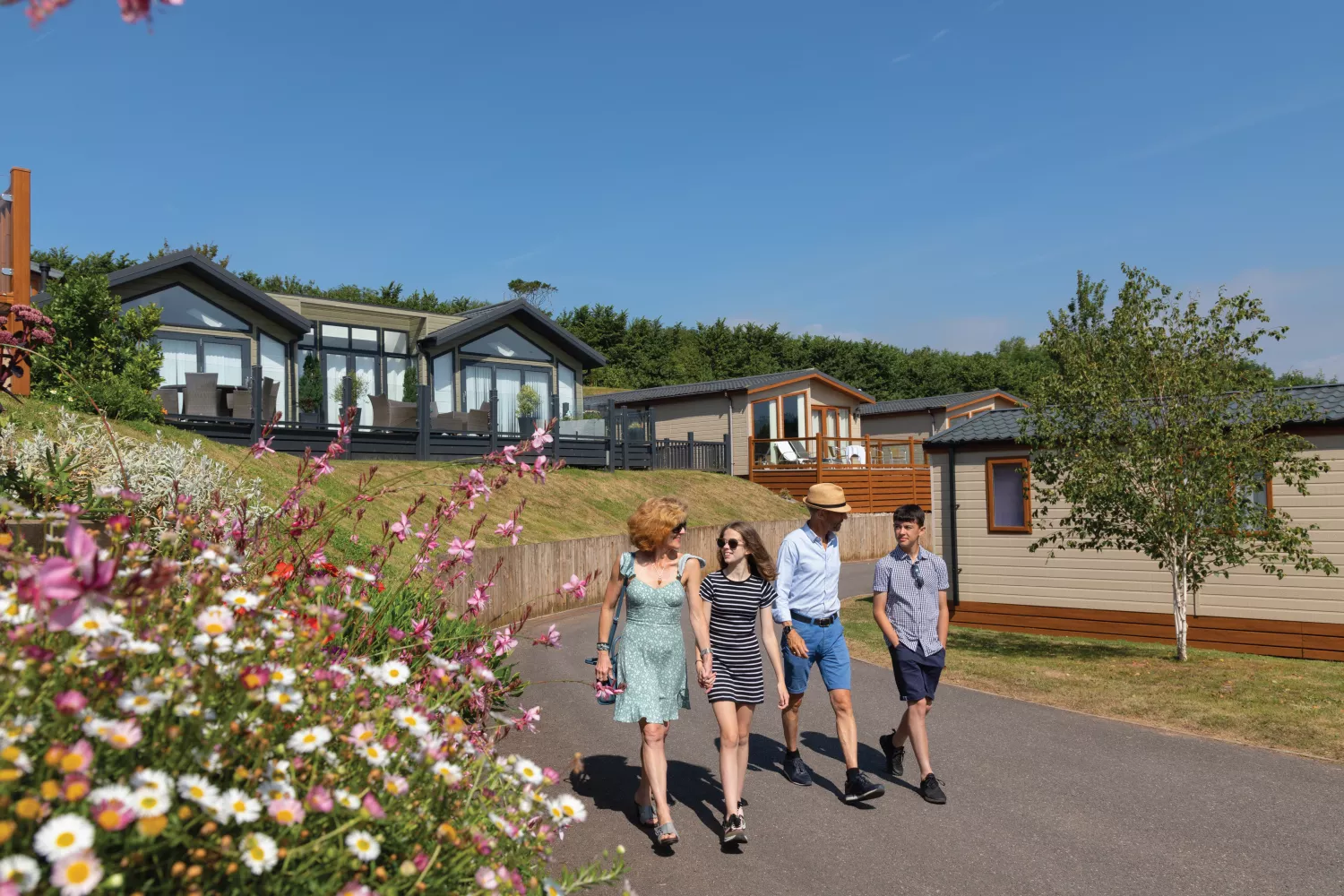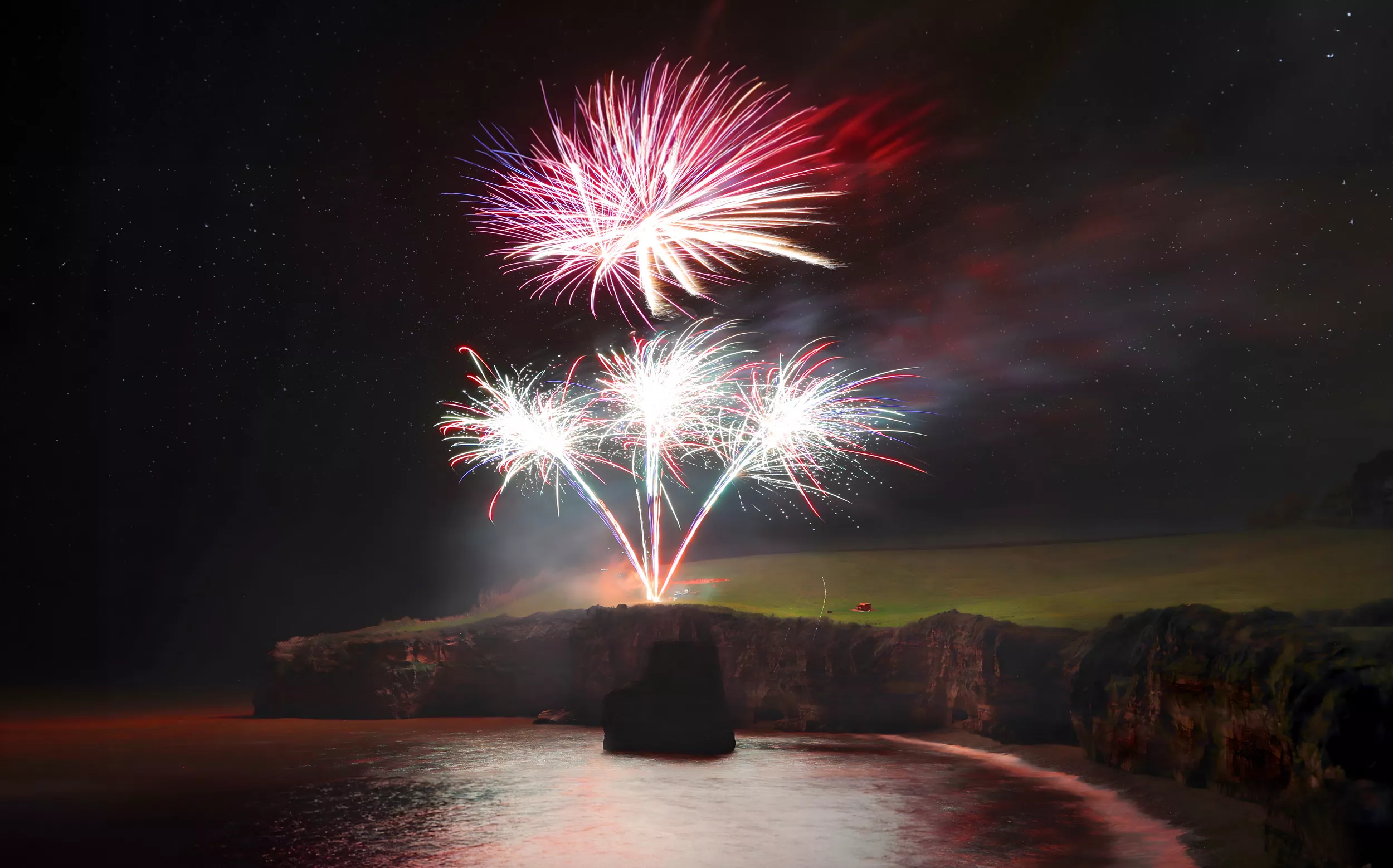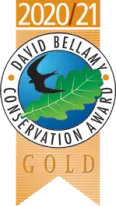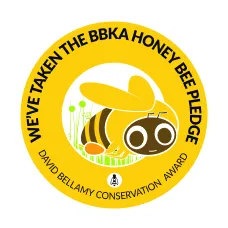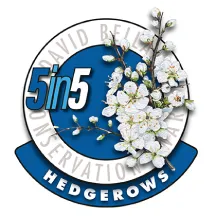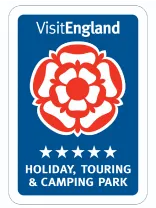
Our latest guide looks at birds to look out for in Devon throughout the year and the ideal locations to find them.
Many of these can be seen at Ladram Bay and the surrounding areas, you can even lend a hand by keeping little bundles of twigs and dry moss around your holiday homes for them to use as nesting material.
Bird Identifier
The RSPB have put together this really useful bird identifier to help you confirm your sightings.
During spring, Sparrows (pictured below), Blackbirds, Robins and other garden birds will be gathering and carrying twigs, moss and feathers in their beaks as they start to build their nests.
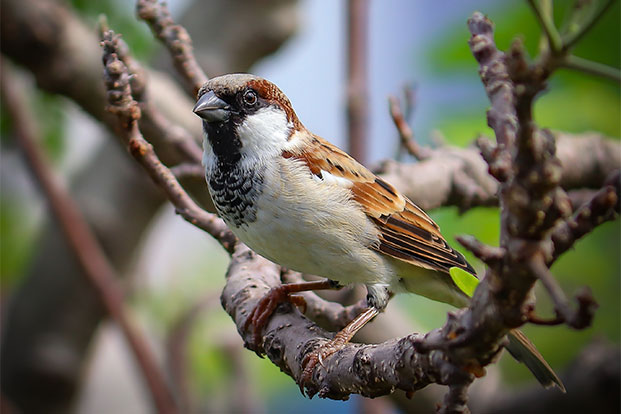
You may hear (or spot) tiny warblers such as Chiffchaffs as they return to the UK after a warm winter in Africa. In mid-spring, Finches and other farmland birds often visit gardens seeking extra food. Towards the end of the season you may spot Bullfinches (pictured) lured into gardens by buds on fruit trees.
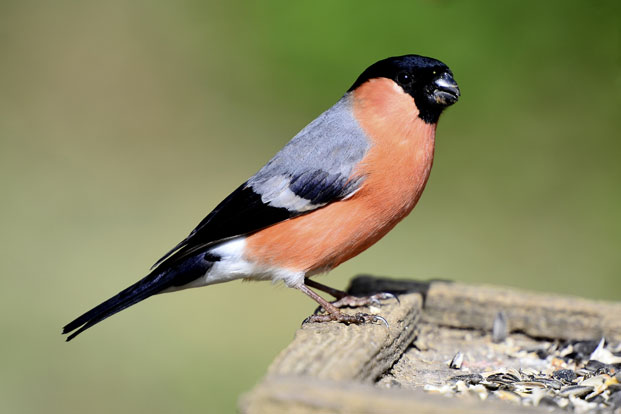
Between May and September, those living near woodlands are often treated to a display of spotted flycatchers, which perch in trees and then surge upwards to catch insects in flight.
Devon’s diverse landscape includes marshlands, moors, commons, forest and fields, making it a haven for our winged little friends. For those twitchers itching to find the best bird watching spots in Devon, we’ve put together a list of prime bird watching locations near to Ladram Bay.
Woodbury Common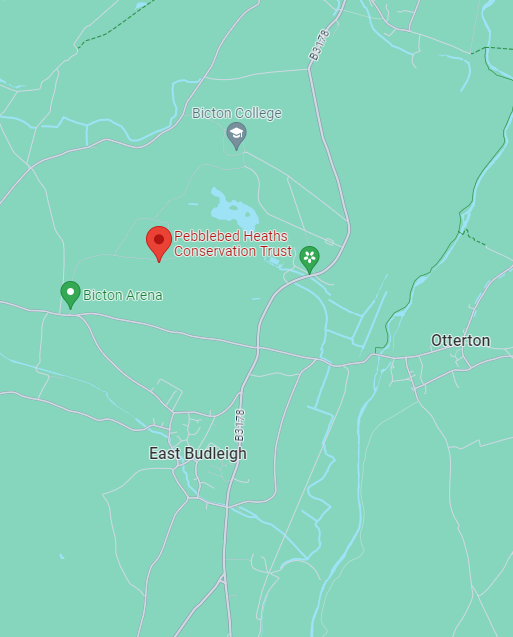
Part of the East Devon Pebblebed Heaths, the wider area also includes Bicton Common, Dalditch Common, East Budleigh Common, Colaton Raleigh Common, Mutters Moor, Hawkerland, Harpford Common and Aylesbeare Common.
The sites have been designated a Special Area of Conservation, a Site of Special Scientific Interest and a Special Protection Area. In short the area is considered one of the most important conservation sites in Europe and is also a great place to go dog walking in East Devon.
The Pebblebed heaths offer a safe haven for wildlife and a great location to view many rarer species. To date a total of 140 bird species have been spotted on the heaths, of which 66 are known to breed regularly.
Of these regular breeders, 28 birds are of conservation concern, these include the Dartford warble (pictured below), the Hobby and the Nightjar, the latter of whom migrate to the common all the way from Africa each year.
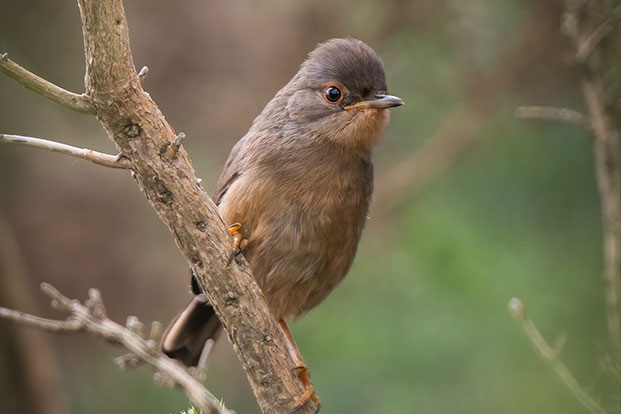
Look out for:
- Dartford warbler (pictured)
- Hobby
- Nightjar
Address:
See Google Maps for coordinates
Bowling Green Marsh – Topsham
Bowling Green Marsh is located on the East Devon side of the Exe Estuary just outside the picturesque town of Topsham (walking distance). The site is an important site for wintering birds and considered by the twitching community as one of the top places to watch birds in south-west.
Would be twitchers can see a wide range of waterbirds at very close range in winter, including hundreds of black-tailed godwits and wigeons as they feed close to the hide. Throughout the year, the open water attracts many different species of wetland birds; little grebes, mute swans and a variety of ducks breed here.
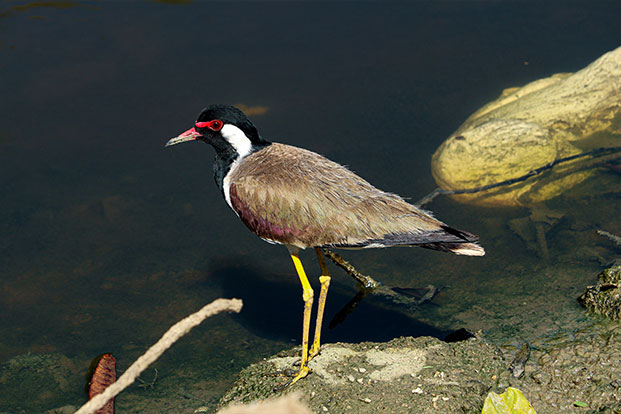
As there isn’t a car park onsite (except for Blue badge holders), please follow our directions which will take you to the Holman Way car park (click link for Google Maps).
Look out for:
- Lapwings (pictured)
- Redshanks
- Listen for rare Cetti’s warblers
Address:
See Google Maps for coordinates
Dawlish Warren Natural Reserve
The Dawlish Warren Nature Reserve is located on the west side of the Exe Estuary (adjacent to Bowling Green Marsh in Topsham in East Devon) in an area of grassland, mudflats and sand dunes. The reserve centres on a 1.5 mile long beach at the mouth of the Exe Estuary.
Being part of the the Exe Estuary, Dawlish Warren Nature Reserve is an extremely important place for wildfowl and wading birds in the UK with thousands of birds visiting to feed, migrate, or spend the winter.
Each autumn up to 23,000 wildfowl and other wading birds travel to the Exe Estuary from the north to escape the cold, they typically start arriving in August and stay until late March / early April.
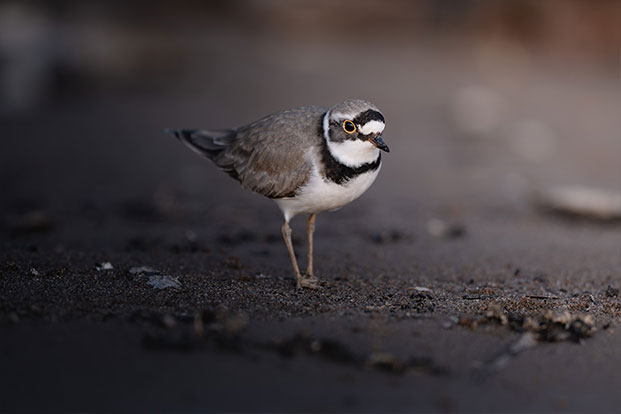
Dawlish Warren is also vital for roosting (and resting) for birds on high tides. During high tides (about 3 hours before and after), thousands of birds gather on the Warren’s shores. These usually include flocks of Dunlin, Grey Plover (pictured above), Bar Tailed Godwit and Oystercatcher. Brent Geese and Wigeon, while Teal also shelter further inshore.
Address:
See Google Maps for coordinates
Seaton Marshes LNR
Colyford Common and Black Hole Marsh Local Nature Reserves, collectively know as the Seaton Marshes attract considerable wildlife including Wading and Wildfowl birds in the winter. The paths that run through the reserve are very accessible, making it perfect for a younger and older twitchers alike. The 360-degree viewing hide provides fantastic views of the nature reserve and the Axe Estuary.
The marshes teem with bird life in the winter, with some rare visitors using the area as a stop over as well as large feeding flocks of Teal, Shelduck and Wigeon. On colder days visitors may even be lucky enough to spot the elusive Snipe, while Black tailed Godwit can be seen feeding amongst larger numbers of Shoveler and Curlew (pictured below). The flocks of Curlew are often seen feeding on the mud flats as they use their long specially adapted downward curving beaks to scour the ground, used for pulling up food (like lugworms) that hide deep down in the mud.
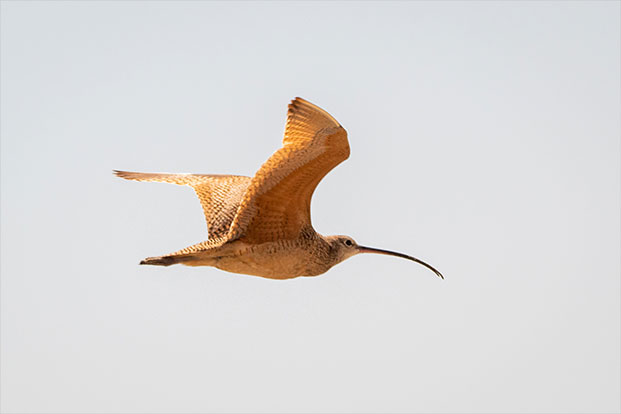
The summer sees many breeding birds return to the marshes, notably Kingfishers, which are often seen fishing from a perch directly in front of the hide. The reserves bird hide and feeding table allows twitchers to get close-up views of birds that wouldn’t normally visit your garden, such as Reed Buntings and even Water Rail.
Look out for:
- Curlew (pictured)
- Teal
- Shelduck
- Wigeon
- Shoveler
- Kingfishers
- Buntings
- Water Rail
Address:
Harbour Road, Seaton, Devon, EX12 2LX, this can be reached with a short walk from the Harbour Road car park.
